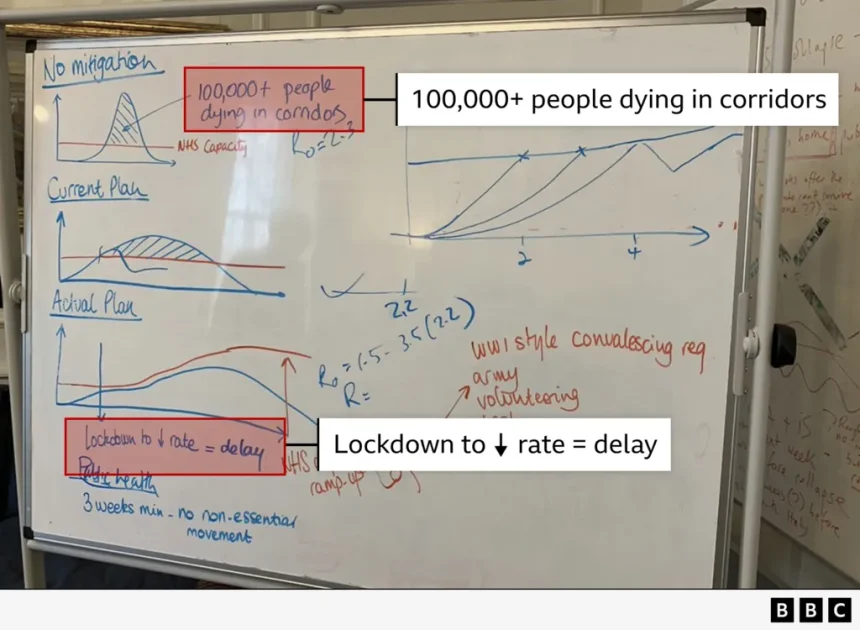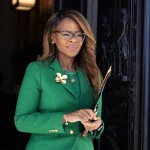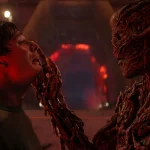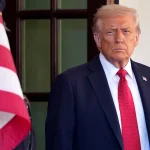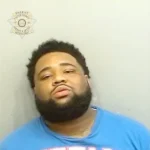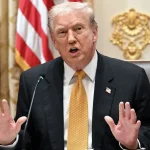The Covid-19 pandemic was the UK’s biggest national crisis since World War II. Overnight, millions were ordered to stay home, schools and businesses shut their doors, and billions were poured into keeping the country afloat.
Now, as the UK Covid Inquiry prepares to release its second major report, thousands of private WhatsApp messages, emails, handwritten notes and confidential government documents have exposed the intense chaos and critical decisions made behind closed doors.
BBC News has reviewed more than 7,000 internal documents, giving a rare look at what was happening inside Downing Street as the virus began to spread in early 2020.
Early Warnings: “We Are Tracking This — Don’t Forward”
On 2 January 2020, international disease alerts flagged a mysterious outbreak in Wuhan.
A day later, England’s Deputy Chief Medical Officer Jonathan Van-Tam emailed Oxford’s Prof. Peter Horby:
“We are aware of this and are tracking.
If you get whispers from your Chinese contacts please report in. Don’t forward this email.”
By the end of January, UK diplomats in China were warning London that Wuhan was in deep crisis, comparing the situation to the SARS outbreak and saying Beijing’s response was facing public distrust.
The virus soon hit Thailand, South Korea, Iran and Italy — and would soon overwhelm Europe.
“Follow the Science!” – The WhatsApp Chats Begin
On 7 March, hours before attending the England–Wales rugby match, Boris Johnson messaged Health Secretary Matt Hancock:
Boris Johnson: “You are doing great. Anything I can do?”
Hancock: “Follow the science!… This is a national effort… a unifying clarion call for you to lead.”
Days later, large events like the Cheltenham Festival still went ahead, despite growing warnings from scientists.
The UK’s plan was initially to delay the spread rather than lock down immediately — but the virus was spreading far faster than expected.
“WE ARE NOT READY” — Panic Inside No. 10
On 13 March, two senior No. 10 officials sat in a meeting with scientific advisers.
One wrote in huge capital letters:
“WE ARE NOT READY.”
The other crossed out “NOT READY” and replaced it with an expletive.
That weekend, Dominic Cummings and key advisers huddled with the PM. Notes scribbled on whiteboards projected catastrophic consequences:
More than 100,000 people could die “in hospital corridors” if no lockdown occurred.
Cummings messaged Johnson:
“We move through the gears to do whatever we need to stop NHS collapse.”
Within days, schools, pubs, restaurants, gyms and cinemas began shutting down.
Sadiq Khan’s Private Letter: “Lives Are Being Endangered”
On 22 March, London Mayor Sadiq Khan privately wrote to Johnson:
“…current messaging is failing… thousands of lives are being endangered.”
The next day, Boris Johnson announced the UK’s first national lockdown in a historic TV address viewed by 27 million people.
The Tension: Saving Lives vs Saving the Economy
By spring, hospitals were stretched but never completely overrun. Cases fell — but lockdown had severe effects:
- Children out of school
- Mental health declines
- Massive economic damage
Inside Downing Street, Johnson scrawled a handwritten instruction on 22 May:
“Start Operation BOUNCEBACK.”
Restrictions eased, and Rishi Sunak launched Eat Out to Help Out.
But Hancock privately warned it was spreading the virus in high-risk areas.
Autumn Chaos: “We Look Like a Terrible, Tragic Joke”
Through autumn, scientists demanded a short circuit-breaker lockdown. Johnson oscillated between tightening rules and resisting more restrictions.
Simon Case, then the most senior civil servant in No. 10, wrote in frustration:
“We look like a terrible, tragic joke… If we were going hard, that decision was needed weeks ago.”
Johnson defended himself later, saying the “science kept changing” and he was weighing competing arguments.
Second Lockdown — and Johnson’s Angry Notes
By late October, new restrictions clearly weren’t enough.
Johnson scribbled on a classified Covid briefing document:
“What do we ACHIEVE by shrinking the economy if we don’t know how many times we are going to have to do it?”
Another handwritten line read:
“If we carry on with this endless lockdown strategy… the attempt to protect the population may become more harmful than the disease.”
On 5 November 2020, England entered its second national lockdown.
Christmas Cancelled & the Final Lockdown
The government initially planned to allow families to gather at Christmas.
But as a more infectious variant spread, millions were told — with almost no notice — that Christmas mixing was cancelled.
A third national lockdown began in January 2021, just as the vaccine rollout began accelerating.
Five Years Later: What Will the Inquiry Decide?
The upcoming report — expected to run nearly 800 pages — will examine:
- Whether lockdowns should have happened earlier
- The trade-off between restrictions and economic/mental health damage
- The impact on vulnerable groups
- Public trust after the “Partygate” revelations
- Accountability for government failures
Families of more than 235,000 people who died during the pandemic say they want answers — and real reform — so the UK is better prepared for future pandemics.

